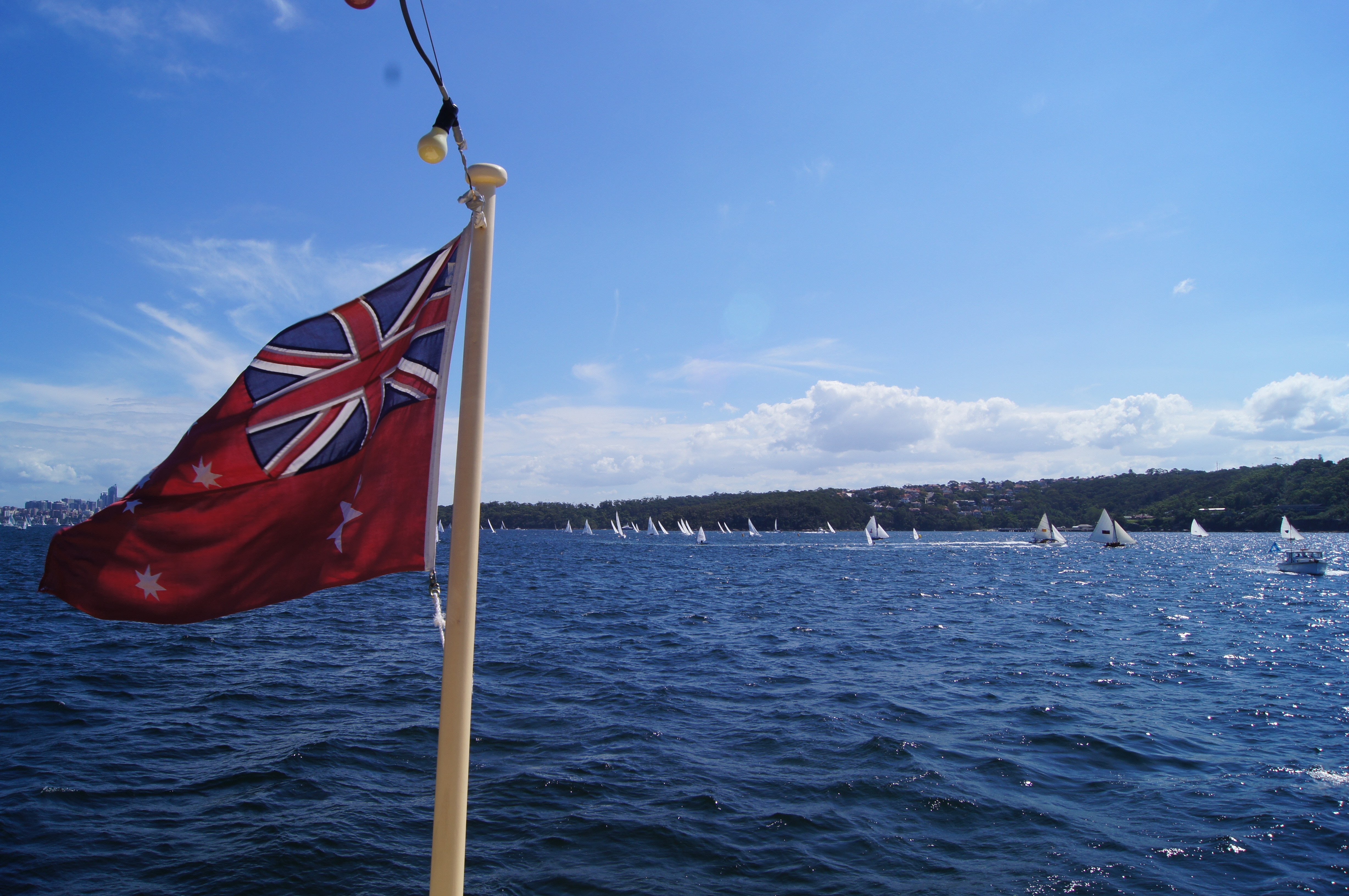
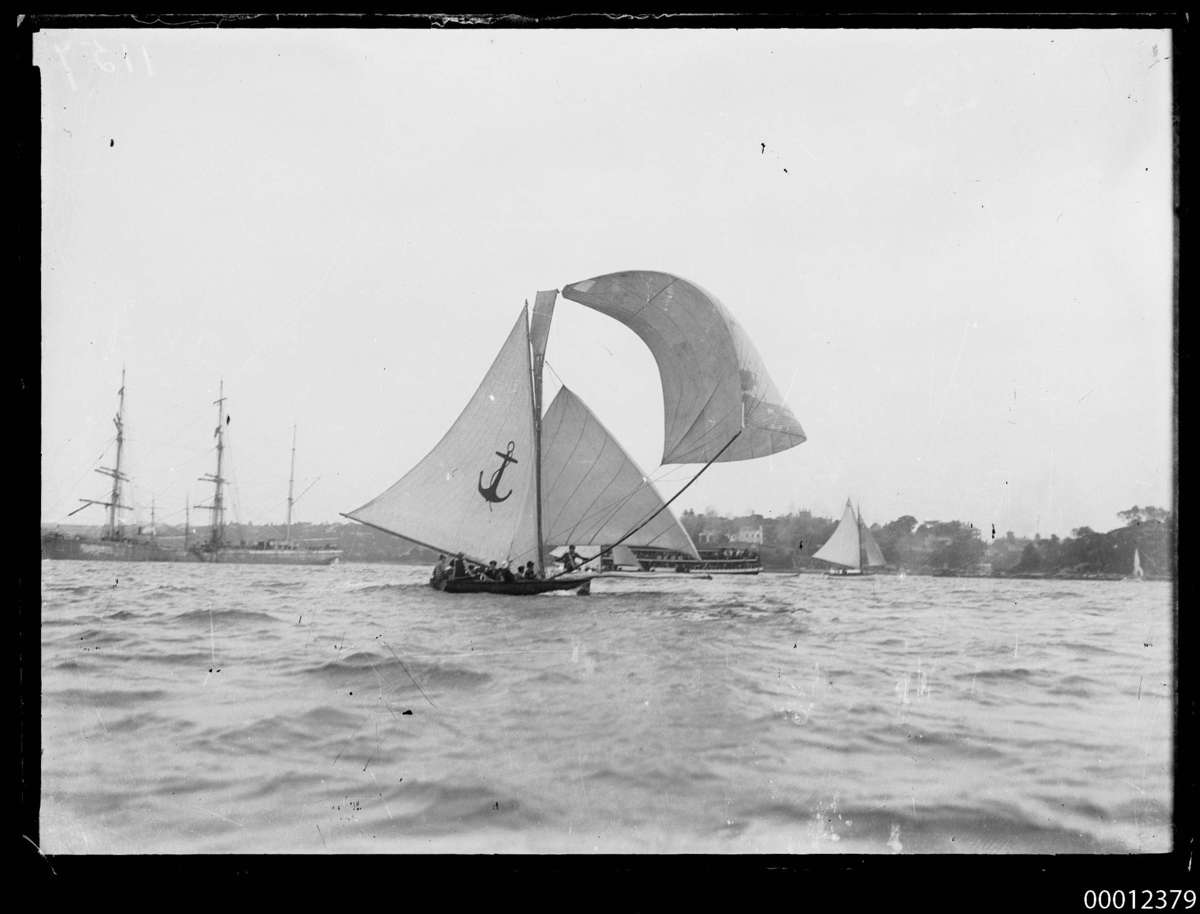
18-foot skiff Yendys sailing on Sydney Harbour in William Hall’s day
Photographer: William J Hall
ANMM Collection
A few Saturdays ago my colleague Penny Hyde and I packed our sunscreen and hats and set off for Sydney’s oldest sailing club, the Sydney Flying Squadron in Milsons Point. In our own attempt to recreate history, our aim was to walk in photographer William J Hall’s footsteps yet again and see the world the way he did. We wanted to see Hall’s harbour and explore the part of his photographic portfolio we’ve come to love in the museum’s collection. Armed with a camera, we boarded the ferry Regal II, just like people would have done back in Hall’s day, and watched as the historic 18-foot skiffs raced across Sydney Harbour, in all its sparkling splendour.

18-foot skiffs milling next to Clark Island in Sydney, 1905
Photographer: William J Hall
ANMM Collection
Replicas of various historic vessels including Aberdare, Alruth, Australia, Britannia, Scot, Tangalooma, Top Weight and Yendys, glided gracefully across the harbour that day. The race report from Sydney Flying Squadron describes the conditions and in the end, it was Yendys who won by two minutes in front of Aberdare and Tangalooma.
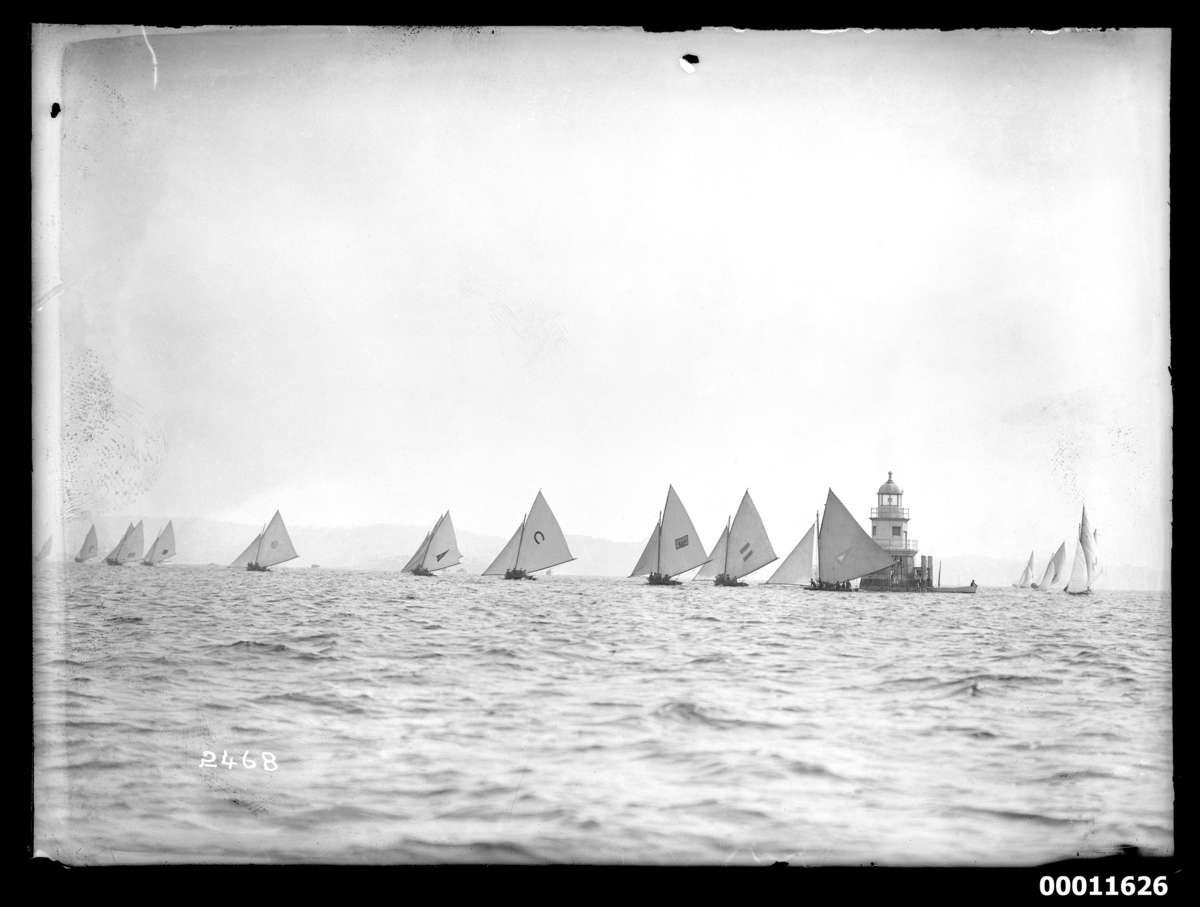
Sailboats and Channel Pile Light on Sydney Harbour, c 1920
Photographer: William James Hall
ANMM Collection
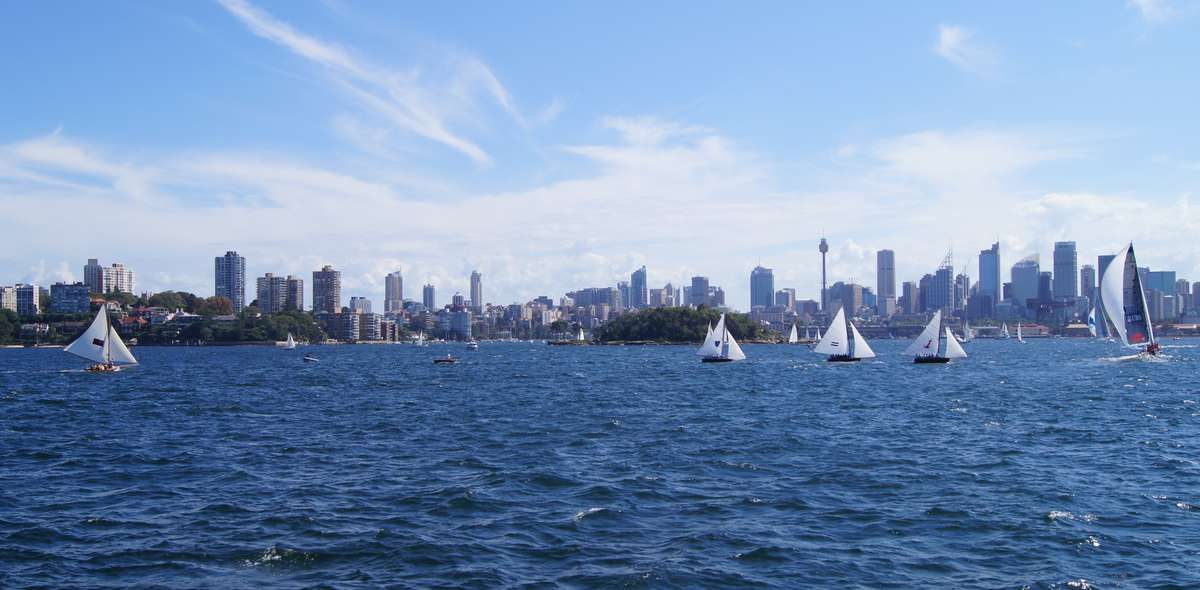
Historic replicas sailing across Sydney Harbour in March 2013. Yendys is in front, followed by Tangalooma, Alruth and Britannia
Photographer: Nicole Cama, ANMM
Attending this regatta, we realised just how challenging the sport actually is. Watching the men and women of each team negotiate the harbour, I was reminded of this wonderful quote:
Competitive sailing in the early part of this century was a tough game. Ropes were made of coarse vegetable fibre which became stiff with water, tearing skin from the palms of the hands and rapping knuckles until they bled.
[Jeff Toghill, Sydney Harbour of Yesteryear: The glass plate photography of William James Hall, 1982, p 7]
Juxtaposed against the graceful skiffs of “yesteryear”, were the more modern watercraft, plying their way across water, and sometimes sailing perilously close to our ferry. There were a few near misses out there that day!
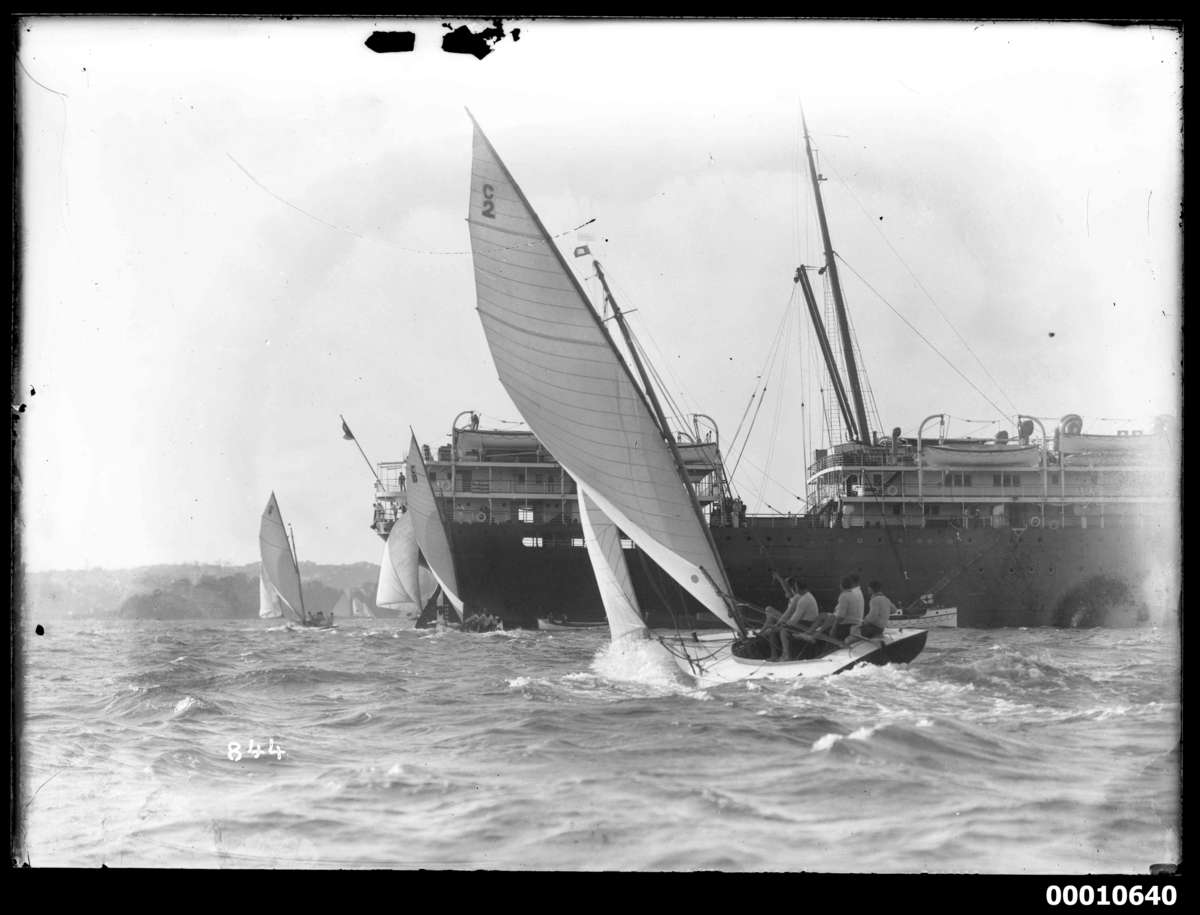
E.O.J. (C2) and other 21-footers and an ocean liner, Sydney Harbour, c 1925
Photographer: William J Hall
ANMM Collection
Though the Saturday regatta today may not reach the popularity it once boasted in the early 20th century, it remains a tradition upheld by the ‘ex-skiffies’ and a core part of Sydney’s maritime history. Gone are the days when spectator ferries had people crammed like sardines or the time when hundreds of sailboats consistently crowded the harbour in a buzz of chaos and excitement.
|
|
|
But, if you go out on a clear Saturday afternoon, you may just catch a glimpse of a few ghosts; you’ll find the skiffs of the past interspersed with the newer boats, racing across the glittering harbour toward the finish line.
Nicole Cama
Curatorial assistant








